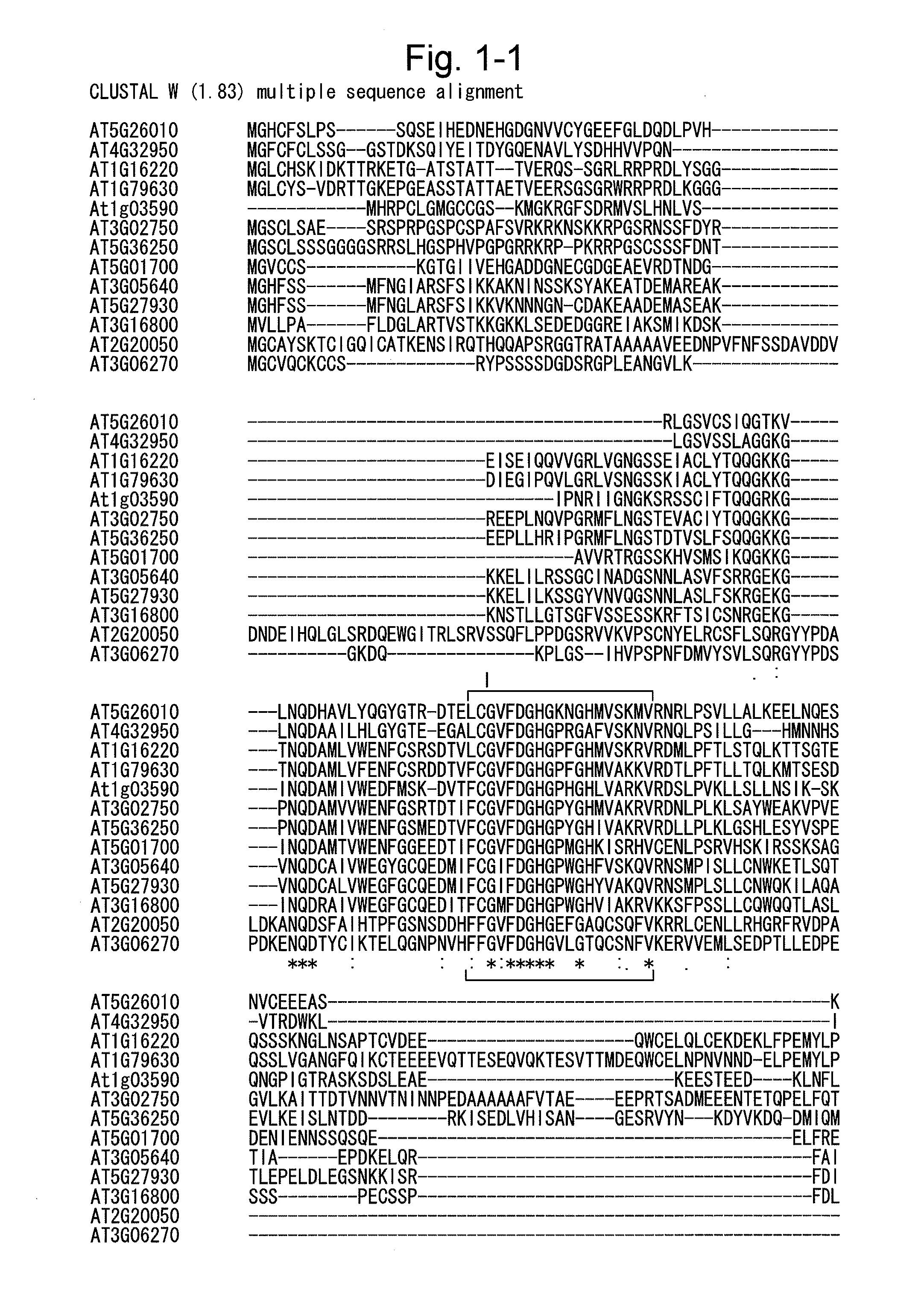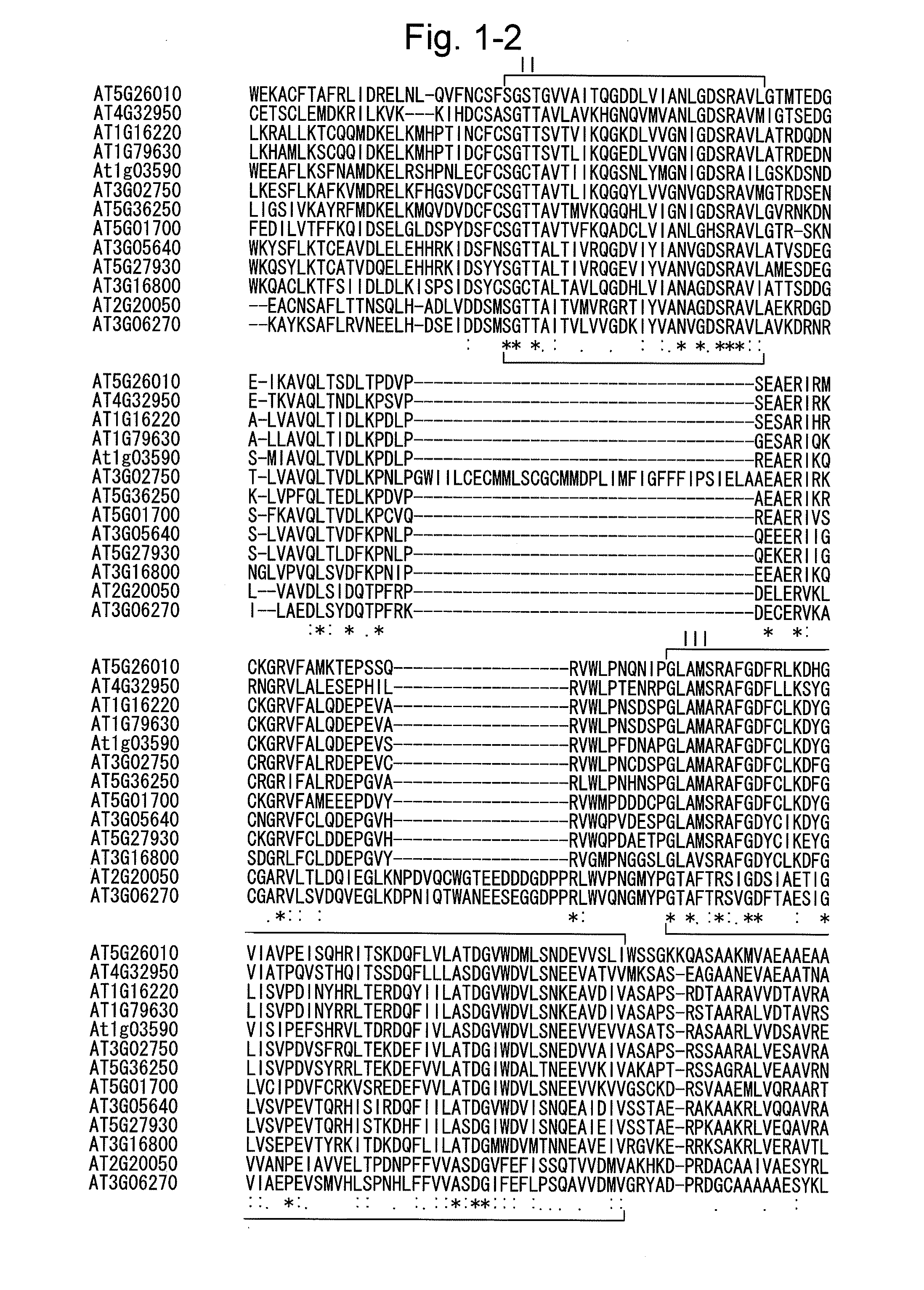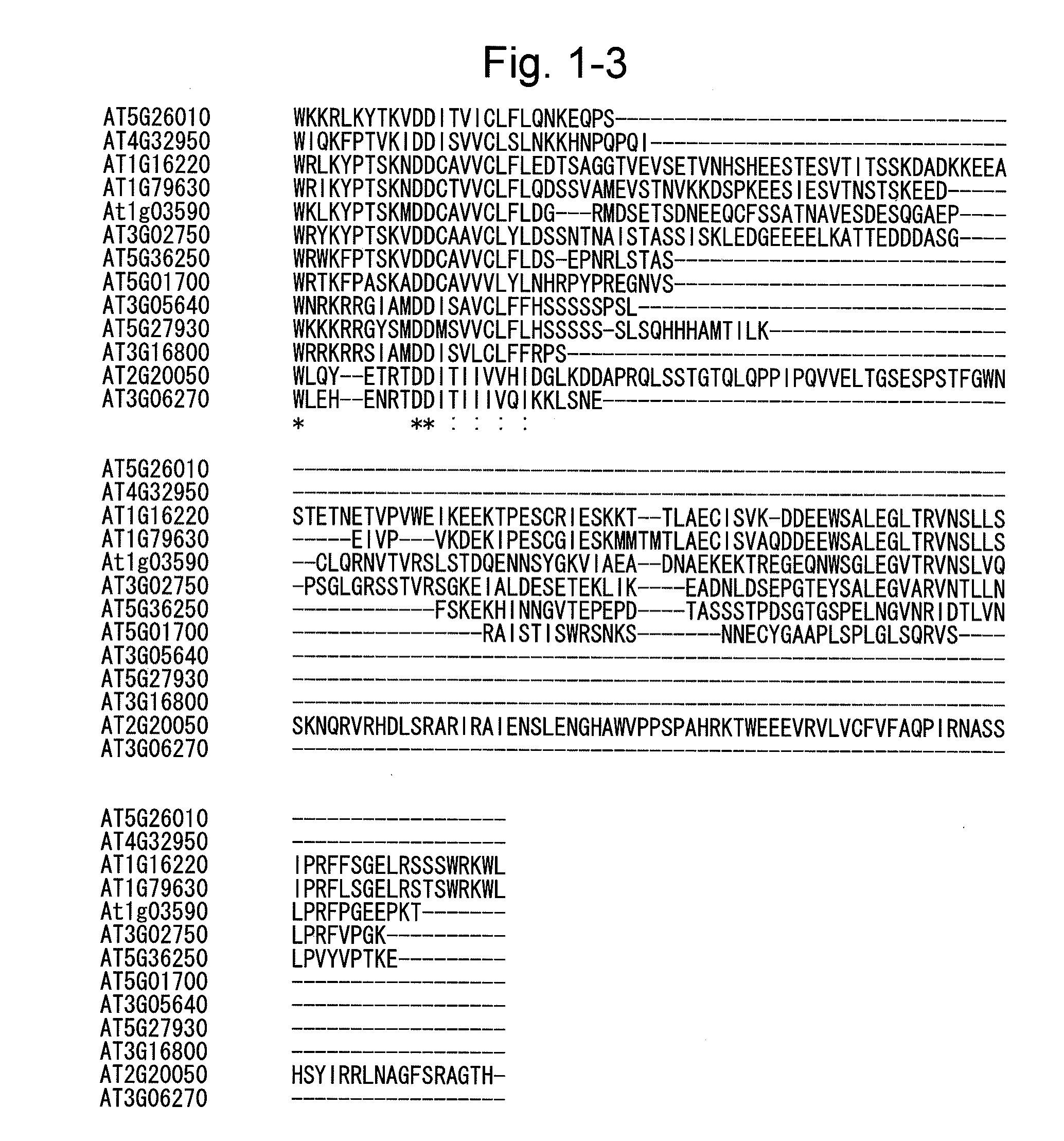Gene for increasing the production of plant biomass and/or seeds and method for use thereof
- Summary
- Abstract
- Description
- Claims
- Application Information
AI Technical Summary
Benefits of technology
Problems solved by technology
Method used
Image
Examples
example 1
[0115]Preparation of Transformants (Arabidopsis thaliana) Through Introduction of the PP2C (Protein Phosphatase 2C) Gene (At3g05640)
1. Materials and Methods
1-1. Experimental Materials
[0116]As experimental materials, seeds of Arabidopsis thaliana mutants (Activation-tag T-DNA lines: Weigel T-DNS lines, Total of 20072 lines) were used. In addition, the seeds were purchased from the Nottingham Arabidopsis Stock Centre (NASC). Regarding the seeds used as experimental materials, Weigel, D. et al., 2000, Plant Physiol. 122, 1003-1013 can be referred to.
1-2. Methods
1-2-1. Selection of Salt-Resistant Mutants
[0117]Seeds of Weigel T-DNA lines were aseptically sowed on 125 mM or 150 mM NaCl-containing modified MS agar (1%) medium [vitamins in B5 medium, 10 g / l sucrose, and 8 g / L agar (for bacterial medium; Wako Pure Chemical Industries, Ltd.)] and then cultured at 22° C. under 30-100 μmol / m2 / sec illumination (a cycle of 16 hours in the light / 8 hours in the dark). Two to 4 weeks after sowing, s...
example 2
[0141]Preparation of Transformants (Rice) Through Introduction of the PP2C (Protein Phosphatase 2C) cDNA (At3g05640)
2. Materials and Methods
2-1. Experimental Materials
[0142]As experimental materials, Arabidopsis transformants into which a fragment containing ORF of the PP2C gene (At3g05640) prepared in 1 was introduced into Arabidopsis thaliana and rice (Oryza sativa L. ssp. japonica (cv. Nipponbare)) to make transformants as experimental materials.
2-2. Methods
[0143]2-2-1. Obtainment of PP2C (Protein Phosphatase 2C) cDNA (At3g05640)
[0144]Arabidopsis transformants prepared by introduction of a fragment containing ORF of the PP2C gene (At3g05640) prepared in 1 were grown until the plants reached 4 weeks of age. Total RNA was isolated from the above-ground parts, then RT-PCR was performed using TaqMan Reverse Transcription Reagents (Applied Biosystems), so that cDNA was prepared.
[0145]PCR was performed using the following primers that had been designed based on the nucleotide sequence ...
example 3
[0154]Preparation of Transformant (Rice) Through Introduction of PP2C (Protein Phosphatase 2C) cDNA (Os05g0358500)
3. Materials and Methods
3-1. Experimental Materials
[0155]As experimental materials, rice (Oryza sativa L. ssp. japonica (cv. Nipponbare)) was used.
3-2. Methods
[0156]3-2-1. Obtainment of Rice PP2C (Protein Phosphatase 2C) cDNA (Os05g0358500)
[0157]In this Example, a rice homologous gene (PP2C gene (Os05g0358500)) homologous to PP2C (protein phosphatase 2C) (At3g05640) used in Examples 1 and 2 was used. The entire sequence was chemically synthesized based on the nucleotide sequence (SEQ ID NO: 6) of the coding region of rice PP2C (Os05g0358500). A fragment of the chemically synthesized entire sequence was cloned into pDONR 221 that was a donor clone of a MultiSite Gateway Three-Fragement Vector Construction Kit (Invitro gen).
3-2-2. Construction of Plant Expression Vector
[0158]A corn-derived ubiquitin gene promoter (SEQ ID NO: 33: Christensen, A. H. and Quail, P. H., Transge...
PUM
| Property | Measurement | Unit |
|---|---|---|
| Electric charge | aaaaa | aaaaa |
| Temperature | aaaaa | aaaaa |
| Temperature | aaaaa | aaaaa |
Abstract
Description
Claims
Application Information
 Login to View More
Login to View More - R&D
- Intellectual Property
- Life Sciences
- Materials
- Tech Scout
- Unparalleled Data Quality
- Higher Quality Content
- 60% Fewer Hallucinations
Browse by: Latest US Patents, China's latest patents, Technical Efficacy Thesaurus, Application Domain, Technology Topic, Popular Technical Reports.
© 2025 PatSnap. All rights reserved.Legal|Privacy policy|Modern Slavery Act Transparency Statement|Sitemap|About US| Contact US: help@patsnap.com



